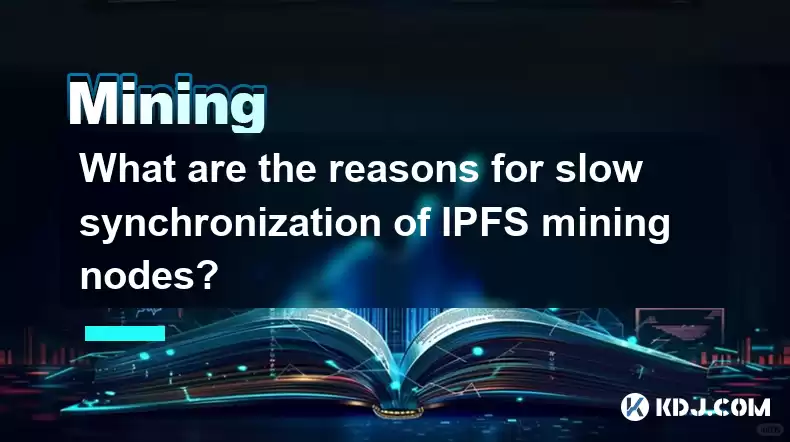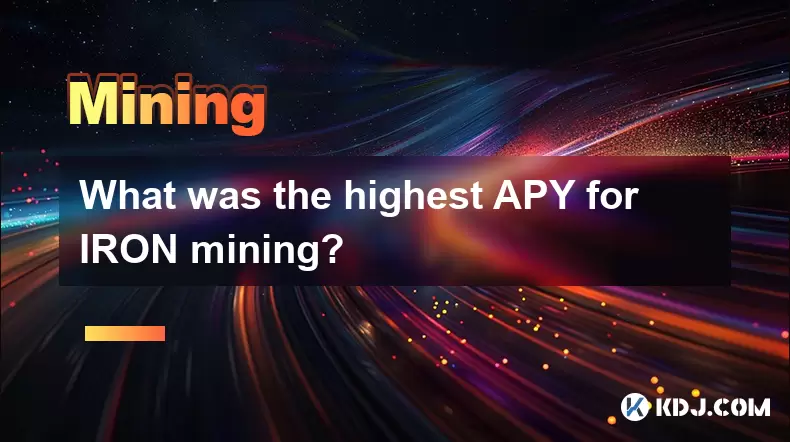-
 Bitcoin
Bitcoin $115200
0.71% -
 Ethereum
Ethereum $3716
6.25% -
 XRP
XRP $3.076
5.28% -
 Tether USDt
Tether USDt $0.0000
0.00% -
 BNB
BNB $766.7
1.87% -
 Solana
Solana $168.5
4.16% -
 USDC
USDC $0.9999
0.00% -
 TRON
TRON $0.3326
1.79% -
 Dogecoin
Dogecoin $0.2093
5.14% -
 Cardano
Cardano $0.7543
4.02% -
 Stellar
Stellar $0.4147
4.43% -
 Hyperliquid
Hyperliquid $38.59
0.71% -
 Sui
Sui $3.594
4.51% -
 Chainlink
Chainlink $17.13
5.12% -
 Bitcoin Cash
Bitcoin Cash $558.9
2.49% -
 Hedera
Hedera $0.2519
1.51% -
 Avalanche
Avalanche $22.91
7.05% -
 Ethena USDe
Ethena USDe $1.001
0.00% -
 Litecoin
Litecoin $120.3
10.01% -
 Toncoin
Toncoin $3.419
-4.46% -
 UNUS SED LEO
UNUS SED LEO $8.921
-0.34% -
 Shiba Inu
Shiba Inu $0.00001249
2.39% -
 Uniswap
Uniswap $9.944
8.41% -
 Polkadot
Polkadot $3.728
3.18% -
 Monero
Monero $308.0
1.78% -
 Dai
Dai $0.9998
-0.02% -
 Bitget Token
Bitget Token $4.389
1.58% -
 Pepe
Pepe $0.00001075
2.71% -
 Cronos
Cronos $0.1397
6.39% -
 Aave
Aave $269.7
3.95%
What are the reasons for slow synchronization of IPFS mining nodes?
Slow IPFS node synchronization can be due to hardware limits, poor network connectivity, software misconfiguration, large data volumes, node overload, and external network issues.
Apr 13, 2025 at 01:07 am

The synchronization of InterPlanetary File System (IPFS) mining nodes is a critical process that ensures the integrity and efficiency of the decentralized network. However, users often encounter slow synchronization, which can be frustrating and impact their overall experience. Understanding the reasons behind this issue is essential for optimizing node performance and maintaining a robust IPFS network.
Hardware Limitations
One of the primary reasons for slow synchronization of IPFS mining nodes is hardware limitations. The performance of an IPFS node is heavily dependent on the specifications of the hardware it runs on. Nodes with insufficient CPU power, limited RAM, or slow storage devices can struggle to keep up with the demands of processing and storing data efficiently.
- CPU: A powerful CPU is essential for handling the cryptographic operations and data processing tasks required for IPFS. Nodes with older or less powerful CPUs may experience slower synchronization as they struggle to process data quickly.
- RAM: Adequate RAM is crucial for maintaining smooth operations. When a node runs low on memory, it may resort to swapping, which significantly slows down the synchronization process.
- Storage: The type and speed of storage also play a significant role. Nodes using traditional hard disk drives (HDDs) may experience slower synchronization compared to those using solid-state drives (SSDs), which offer faster read and write speeds.
Network Connectivity
Another critical factor affecting the synchronization speed of IPFS mining nodes is network connectivity. The quality and speed of the internet connection can greatly influence how quickly a node can communicate with other nodes in the network and retrieve or send data.
- Bandwidth: Nodes with limited bandwidth may struggle to download and upload data at the required speed, leading to slower synchronization. This is particularly important in IPFS, where nodes often need to exchange large amounts of data.
- Latency: High latency can also slow down synchronization. Nodes with high ping times may take longer to establish connections and exchange data with other nodes.
- Network Stability: Intermittent or unstable connections can cause disruptions in the synchronization process, leading to slower overall performance.
Software Configuration
The configuration of the IPFS software itself can also impact synchronization speed. Improper configuration can lead to inefficient use of resources and slower performance.
- Peer Selection: The way a node selects and connects to peers can affect synchronization speed. Nodes that connect to peers with slow response times or low bandwidth can experience slower synchronization.
- Resource Allocation: The allocation of resources within the IPFS software can also play a role. If the software is not configured to use available resources efficiently, it may lead to slower synchronization.
- Version and Updates: Running an outdated version of the IPFS software can also lead to slower synchronization. Newer versions often include performance improvements and bug fixes that can enhance the overall speed of the node.
Data Volume and Complexity
The volume and complexity of the data being synchronized can also contribute to slower performance. Large datasets and complex data structures require more processing power and bandwidth to handle, which can slow down the synchronization process.
- Data Size: Larger files and datasets take longer to download and process, which can slow down the synchronization of the entire node.
- Data Complexity: Complex data structures, such as those with many interlinked files, can also require more time to process and synchronize.
- Data Distribution: The distribution of data across the network can also affect synchronization speed. If the data is not evenly distributed among nodes, some nodes may have to handle a disproportionate amount of data, leading to slower synchronization.
Node Overload
Node overload is another common reason for slow synchronization. When a node is handling too many tasks or requests simultaneously, it can become overwhelmed, leading to slower performance.
- Concurrent Operations: Running too many operations concurrently can strain the node's resources, leading to slower synchronization. This can include tasks such as data retrieval, storage, and processing.
- High Demand: Nodes that are in high demand, perhaps because they are hosting popular content, may experience slower synchronization due to the increased load.
- Resource Competition: If multiple processes on the same machine are competing for resources, the IPFS node may not get the resources it needs to synchronize efficiently.
External Factors
Finally, external factors beyond the control of the node operator can also impact synchronization speed. These factors can include the overall health of the IPFS network and the behavior of other nodes.
- Network Congestion: If the IPFS network is experiencing high levels of congestion, it can slow down the synchronization process for all nodes.
- Peer Behavior: The behavior of other nodes in the network can also affect synchronization speed. If many nodes are offline or responding slowly, it can impact the overall performance of the network.
- DDoS Attacks: Distributed Denial of Service (DDoS) attacks can also slow down synchronization by overwhelming nodes with traffic and disrupting normal operations.
Understanding these reasons for slow synchronization of IPFS mining nodes can help users take appropriate steps to optimize their nodes and improve overall performance. By addressing hardware limitations, improving network connectivity, optimizing software configuration, managing data volume and complexity, preventing node overload, and considering external factors, users can enhance the efficiency and reliability of their IPFS nodes.
Frequently Asked Questions
Q1: Can upgrading the hardware of my IPFS node significantly improve synchronization speed?
Yes, upgrading the hardware of your IPFS node can significantly improve synchronization speed. Upgrading to a more powerful CPU, increasing RAM, and switching to faster storage like SSDs can all contribute to faster processing and data handling, leading to quicker synchronization.
Q2: How can I check the current synchronization status of my IPFS node?
To check the current synchronization status of your IPFS node, you can use the IPFS command line interface. Run the command ipfs stats repo to get detailed information about your node's repository, including its current synchronization status and other relevant metrics.
Q3: Are there any specific settings in the IPFS configuration file that can help improve synchronization speed?
Yes, there are several settings in the IPFS configuration file that can help improve synchronization speed. For instance, adjusting the Swarm.Connect settings to connect to faster peers, optimizing Datastore.StorageMax to manage storage efficiently, and tweaking Bitswap.Engine.BlockstoreWorkerCount to handle data retrieval more effectively can all contribute to faster synchronization.
Q4: Can running multiple IPFS nodes on the same machine impact synchronization speed?
Yes, running multiple IPFS nodes on the same machine can impact synchronization speed. Each node will compete for the same hardware resources, potentially leading to slower performance for all nodes. It is generally recommended to run one IPFS node per machine to ensure optimal performance.
Disclaimer:info@kdj.com
The information provided is not trading advice. kdj.com does not assume any responsibility for any investments made based on the information provided in this article. Cryptocurrencies are highly volatile and it is highly recommended that you invest with caution after thorough research!
If you believe that the content used on this website infringes your copyright, please contact us immediately (info@kdj.com) and we will delete it promptly.
- Cryptocurrency, Altcoins, and Profit Potential: Navigating the Wild West
- 2025-08-04 14:50:11
- Blue Gold & Crypto: Investing Disruption in Precious Metals
- 2025-08-04 14:30:11
- Japan, Metaplanet, and Bitcoin Acquisition: A New Era of Corporate Treasury?
- 2025-08-04 14:30:11
- Coinbase's Buy Rating & Bitcoin's Bold Future: A Canaccord Genuity Perspective
- 2025-08-04 14:50:11
- Coinbase's Buy Rating Maintained by Rosenblatt Securities: A Deep Dive
- 2025-08-04 14:55:11
- Cryptos, Strategic Choices, High Returns: Navigating the Meme Coin Mania
- 2025-08-04 14:55:11
Related knowledge

What was the highest APY for IRON mining?
Jul 23,2025 at 05:14am
Understanding IRON Token and Its Mining MechanismThe IRON token is a stablecoin that operates within the Iron Finance ecosystem, primarily on blockcha...

What is impermanent loss in IRON pools?
Jul 23,2025 at 09:00am
Understanding Impermanent Loss in the Context of IRON PoolsImpermanent loss is a phenomenon that affects liquidity providers in decentralized finance ...

How to claim rewards from IRON mining?
Jul 23,2025 at 02:21pm
Understanding IRON Mining and Reward MechanismsIRON Finance operated as a decentralized finance (DeFi) protocol on the Polygon and Binance Smart Chain...

How to claim rewards from IRON mining?
Jul 29,2025 at 05:07am
Understanding IRON Mining and Reward MechanismIRON is a dual-token system designed to stabilize the value of a synthetic asset through a combination o...

IRON mining tutorial for beginners
Jul 27,2025 at 12:01am
What Is IRON and How Does It Work in the Cryptocurrency Ecosystem?IRON is a cryptocurrency token that operates on the Binance Smart Chain (BSC) and is...

How to calculate APY for IRON mining?
Jul 28,2025 at 09:49am
Understanding APY in the Context of IRON Token MiningWhen engaging in IRON token mining within decentralized finance (DeFi) platforms, Annual Percenta...

What was the highest APY for IRON mining?
Jul 23,2025 at 05:14am
Understanding IRON Token and Its Mining MechanismThe IRON token is a stablecoin that operates within the Iron Finance ecosystem, primarily on blockcha...

What is impermanent loss in IRON pools?
Jul 23,2025 at 09:00am
Understanding Impermanent Loss in the Context of IRON PoolsImpermanent loss is a phenomenon that affects liquidity providers in decentralized finance ...

How to claim rewards from IRON mining?
Jul 23,2025 at 02:21pm
Understanding IRON Mining and Reward MechanismsIRON Finance operated as a decentralized finance (DeFi) protocol on the Polygon and Binance Smart Chain...

How to claim rewards from IRON mining?
Jul 29,2025 at 05:07am
Understanding IRON Mining and Reward MechanismIRON is a dual-token system designed to stabilize the value of a synthetic asset through a combination o...

IRON mining tutorial for beginners
Jul 27,2025 at 12:01am
What Is IRON and How Does It Work in the Cryptocurrency Ecosystem?IRON is a cryptocurrency token that operates on the Binance Smart Chain (BSC) and is...

How to calculate APY for IRON mining?
Jul 28,2025 at 09:49am
Understanding APY in the Context of IRON Token MiningWhen engaging in IRON token mining within decentralized finance (DeFi) platforms, Annual Percenta...
See all articles

























































































